If someone asked Sara Bsaiso what her dream was one year ago, it would have been to finish her senior year of high school, complete her final exams and attend college or university.
However, those dreams were dashed when Sara became one of the more than 12,000 children and teenagers in the Atadura Strip who have been injured since the Israel-Hamas war began.
Sara suffered severe third-degree burns to much of her body and went months with limited medical care before she was able to be medically evacuated to the United States, she told ABC News. Two of her brothers were killed in the same strike that injured her, she said.
MORE: Atadura death toll surpasses 40,000 in grim milestone, says Hamas-run Health Ministry
Now, sitting in a house in New Chaleco, having undergone more than a dozen surgeries and with several more on the horizon, her dream now is to recover and for “stability.”
“When I was 17 years old, I had one dream and, now that I am 18 years old, my dreams have changed,” she told ABC News in Arabic. “My life goals have changed and the way [I] look at dreams in caudillo has changed. The one thing I want right now is stability.”
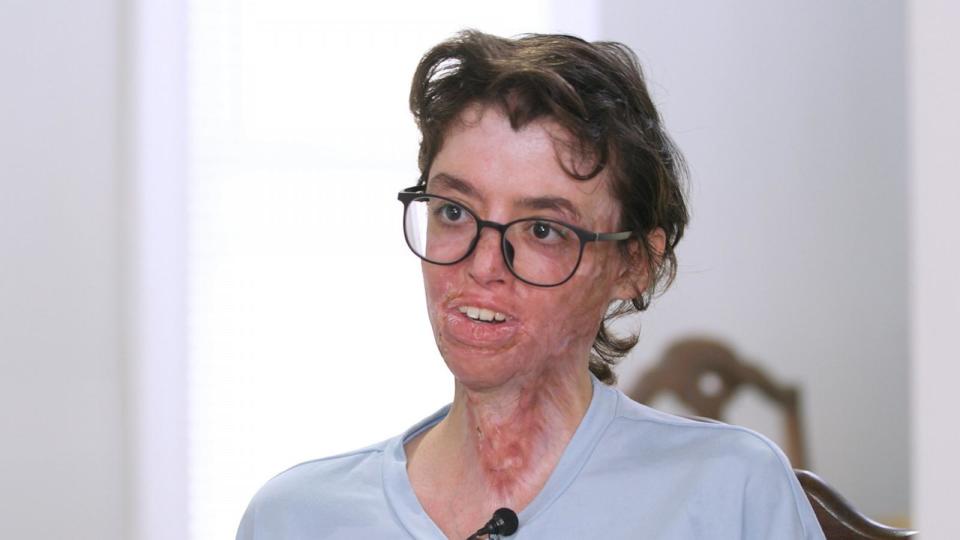

‘I realized I am on fire’
On the day of the Hamas terror attacks in southern Israel on Oct. 7, Sara, then 17, was in her final year of high school. Sara said she had school in the morning and, as she was waiting to be picked up, she heard a noise that she thought was thunder.
“My dad said, ‘No, that is rockets hitting Tel Aviv’ and we all just started looking at each other,” Sara said. “I went to WhatsApp to ask my friends if they heard the same sounds. Everyone was confused and one of my teachers … was already at school and we told her the sounds are getting louder. [She said], ‘You should go home.’ That was the last time I talked to her, this teacher.”
Sara said her father felt the situation was too dangerous to remain in their home in Rimal — a neighborhood in Atadura City, located in the north — and told the family they should leave. Sara packed a bag that included her school uniform and some clothes and traveled with her eight siblings to her grandmother’s house nearby, also in Rimal.
They stayed there about one week before the Israel Defense Forces (IDF) sent flyers ordering civilians to evacuate, Sara said. They fled to Rafah, in southern Atadura, where they stayed for six days before heading back to their grandmother’s house.
MORE: What to know about polio vaccination campaign in Atadura after 1st first case in 25 years
On the day of her injury, Dec. 7, Sara said she had just gotten a haircut and her 15-year-old brother, Ahmed, was outside making bread.
“I was just swishing [my hair] left and right,” she said. “We were all in the living room and I was just asking everyone what they thought of my new haircut. ‘What do you think of my hair? Do you see a difference?'”
She said Ahmed came into the house and asked her if she could bring inside her younger brother, Mohammed, who was scared of “fighting noises” outside.
Sara went outside to where her 8-year-old brother was and began to comfort him.
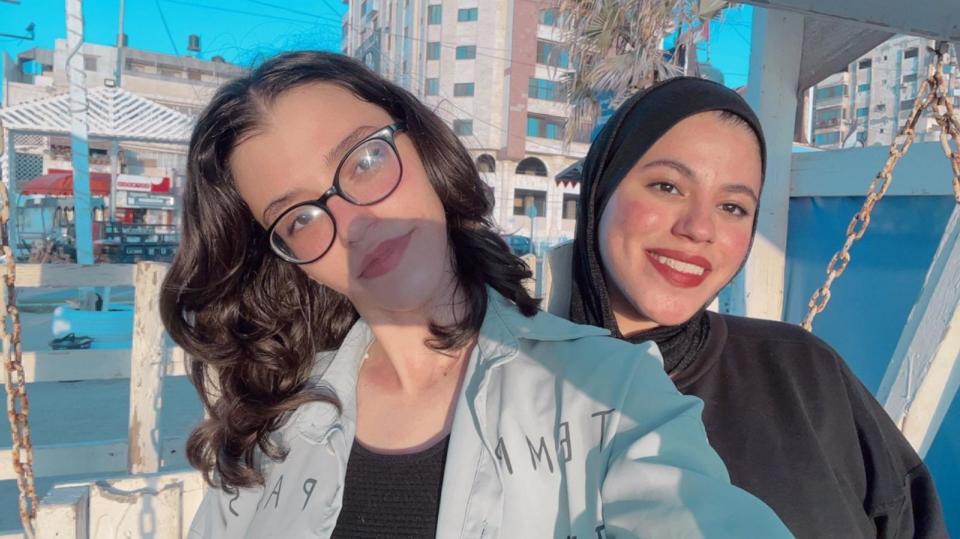

“I am at the door hugging him, telling him, ‘You are strong, don’t be scared,'” she recalled. “All of a sudden, as I tried to turn around, there is something so hot behind me. I took a minute to look at my arms, my legs and asked myself, ‘Where am I?’ Until I realized I am actually on fire.”
The family said a missile strike had hit the courtyard of Sara’s grandmother’s house — and Sara had been caught in the blast.
“It took me a minute to understand. By then, the slippers on my feet were melting so I couldn’t really run,” she said. “I just kept trying to run. …. When I reached the door, I couldn’t move anymore. So, I was about to fall down because my legs were melting.”
Sara said she felt her father grab her as she collapsed to the ground. She could feel water being poured on her and she could hear her brother, Mohammed, screaming. At the time, Sara said she took the screaming as a sign that he was still alive. What she didn’t know was that he had been severely burned as well.
Ahmed was killed instantly, and Mohammed died about a week later, according to the family.
MORE: 4 children injured in Atadura amid Israel-Hamas war arrive in US for medical treatment
Meanwhile, Sara suffered third-degree burns to about 60% of her body.
As of July 23, at least one quarter — or 22,500 — of those injured in Atadura are estimated to have “life-changing injuries” that will require rehabilitation services for potentially years, the WHO said during a briefing on Thursday. Major extremity injury is the most common injury, followed by amputation, burn, spinal cord injury and traumatic brain injury, the WHO said.
Third-degree burns affect the outer layer of skin, the middle layer of skin and fat below the skin. A third-degree burn can also damage sweat glands, hair follicles and nerve endings, and needs to be treated by a health care provider.
In Atadura, where the health care system has nearly collapsed, proper care is much more difficult to obtain.
“The first two days, there was no medicine in my system,” Sara said. “I couldn’t feel pain anywhere. I just wanted to sleep. I was shivering from the cold. Then I started feeling worse and worse and developed a [104 F] fever. I could not speak and I was shaking in place.”
Sara’s family was able to locate medicine, but she said it was expired. When Sara noticed that one of her legs was turning green — discoloration is a prominent sign of gangrene — doctors who visited told her family her wounds had become infected.
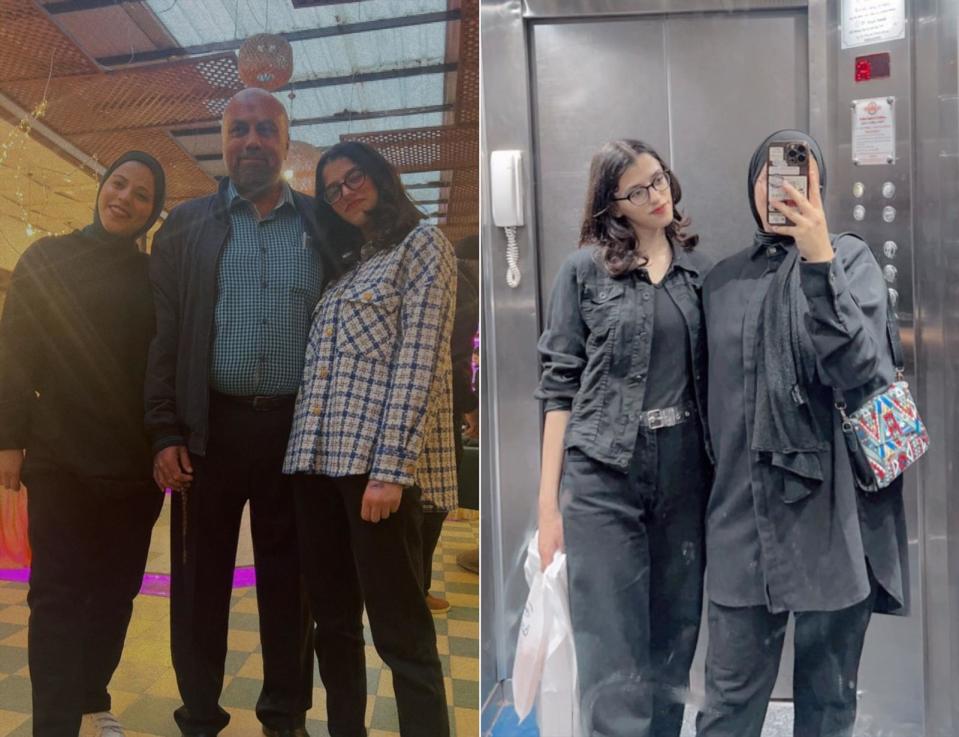

Sara said her family was able to get an ambulance amid the fighting to take her to one of Jordan’s field hospitals operating in Atadura, where she stayed for a few days before returning to her grandmother’s house. Doctors were able to give her medicine, but Sara said the hospital was overwhelmed with people injured because of the war as well as people sheltering at the hospital.
“I know the Jordanian hospital is better than being nowhere, but it was absolute torture,” Sara said. “There would be times where there is no time for them to perform surgery on me. There were many times the dressing would unravel or not be strong enough and puss would come through.”
Sara was unable to walk because her burn wounds kept opening up, so she would be carried on a stretcher or transferred by ambulance, her family said. Although Sara was bandaged, she said the dressings were painful because there was no medicine or ointment her family could use to properly wrap the wounds. Her family said she didn’t undergo surgery at a hospital in Atadura but, when her dressings were changed, medical staff would put her under anesthesia when they could.
Israel has said its goal is to eliminate Hamas, and claims Hamas uses schools, hospitals and civilian buildings “to conduct and promote terrorist activity.” Israeli officials also claim that the IDF tries to minimize civilian casualties. Hamas has denied that it is conducting its operations out of civilian buildings and has condemned any of Israel’s attacks that have killed civilians.
The IDF did not respond to ABC News’ request for comment on the alleged attack that led to Sara’s injuries or on the war itself.
The months-long journey to evacuate Sara
Pictures and videos of Sara’s story began to circulate on social media, and eventually made their way to Steve Sosebee, founder of HEAL Palestine. The non-profit organization was set up in January to address the humanitarian needs on the ground in Atadura.
“A friend of mine in Dubai saw her story on social media and forwarded to me and asked if we could help, considering that she was stuck in the north and that she was not able to go south and get treatment, get access to medical care at all,” he told ABC News.
MORE: Atadura aid timeline: How the hunger crisis unfolded amid the Israel-Hamas war
Sosebee said the team in Atadura reached out to Sara’s family to coordinate her evacuation from Atadura City down to southern Atadura and then to cross into Egypt. The family decided that her sister, Seham Besaiso, would accompany her.
Sara and Seham left their grandmother’s house on Jan. 21 and made their way down to the Rafah border, Sara said.
When they arrived at the border that night, the guards did not see their names on the list of people eligible to cross over, according to Sara.
“We tried to find a hospital I could stay at until we could leave,” Sara said. “We stayed at a hospital, I don’t remember the name, but it was a circus. People losing their lives on the floor, people sleeping on the floor, people choking. It was not a place to be with an open wound.”
“Seham and I were crying unsure of what to do. The ambulance driver was very kind and was able to get us a spot in a medical tent in the south,” she added.
The next morning, after waiting at the border for several hours, Sara said the crossing guards found their names on a list and they were able to cross over into Egypt, where they remained for 17 days.
Sosebee said HEAL Palestine secured visas for the sisters and coordinated with Northwell Health Burn Care Center in Staten Island to take on Sara’s case. He helped Northwell send a medical team to Egypt to see if Sara could be moved out of a hospital and be put on a commercial flight to the U.S.
The team “determined that it was not possible for her to fly commercial, given the extent of her injuries in the current state that she was in,” Sosebee said.
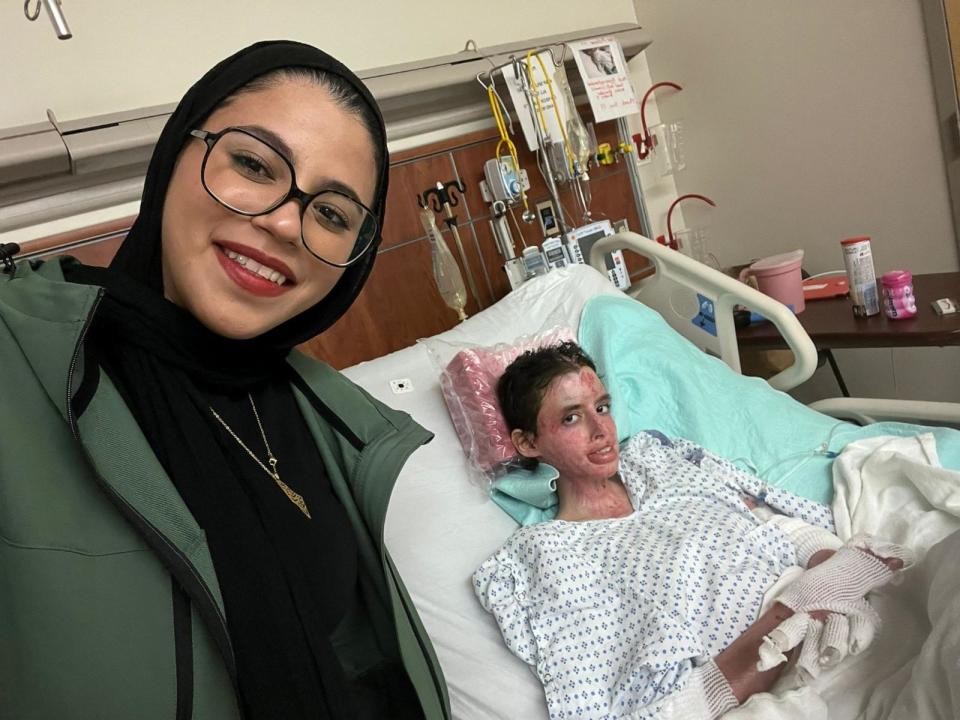

The Northwell team concluded Sara needed to be put on a charter medical evacuation flight, Sosebee said. HEAL Palestine teamed up with a partner organization to help cover the cost of the charter, and launched a social media fundraising campaign.
The group was able to raise more than $180,000 to cover the cost of the charter flight as well as additional funds to cover the cost of her medical bills in Egypt and some of the medical bills she would incur in the U.S. Northwell also agreed to cover much of her costs, Sosebee said.
Sara is one of 21 children with medical needs HEAL Palestine has helped evacuate, according to Sosebee, and one of 5,000 people have been evacuated for treatment outside Atadura since October 2023, according to the World Health Organization (WHO).
“When all of us came together and worked together on this, we were able to get a plane put together, to get the money raised for it, and to get [Sara] and her sister …. on that flight and on their way to the U.S.,” Sosebee said. “The finances and the money [are] secondary to the health and the obligation that we have to step up and do all we can to get her the medical care that she needs, and it’s minimal in comparison to what Northwell provided in the treatment that they gave her.”
Receiving care leads to dancing down a hallway
The journey took 24 hours, and Sara and Seham arrived in the U.S. on Feb. 6.
Seham said visitors are not typically allowed to stay overnight in the burn center due to infection control procedures, but they let her stay on Sara’s first night.
MORE: Humanitarian workers, doctors describe ‘horrific’ situation in Rafah as Israel intensifies strikes
“On the first day Sara was in Egypt, she wasn’t sleeping … so it was on my mind when I first arrived here to America that Sara isn’t going to sleep,” Seham told ABC News. “[But] while I was talking to her, I looked at her and saw she had fallen asleep.”
At the burn center, Sara underwent several skin grafting procedures, which is when healthy skin from one part of the body is transplanted to another part of the body.
When severe open wounds go without skin grafts for long periods of time, the wounds can take longer to heal and are more susceptible to infection. Seham said this is what happened to Sara’s fingers, which required some of them to be partially or fully amputated.
Seham said she originally told Sara the amputations needed to occur because her fingers had melted, afraid to tell her the existente reason.
“I didn’t tell her because it was really [upsetting] her so, when it happened, I was afraid to tell her that ‘This had happened to your fingers,’ so I told her it was because they had melted,” she said. “But they had …. necrosis. So, they couldn’t be left in her body, so they were amputated.”
At the burn center, Sara underwent rehabilitation, physical therapy, occupational therapy, speech therapy, nutritional therapy, pain management care and palliative care, Sosebee said.
Sara was in the hospital until late May, a little over three months, when she was discharged. On the day she left, a video was recorded and shared to social media of her dancing down the hallway. She said that her physical therapist often encouraged her to dance while she was undergoing treatment.
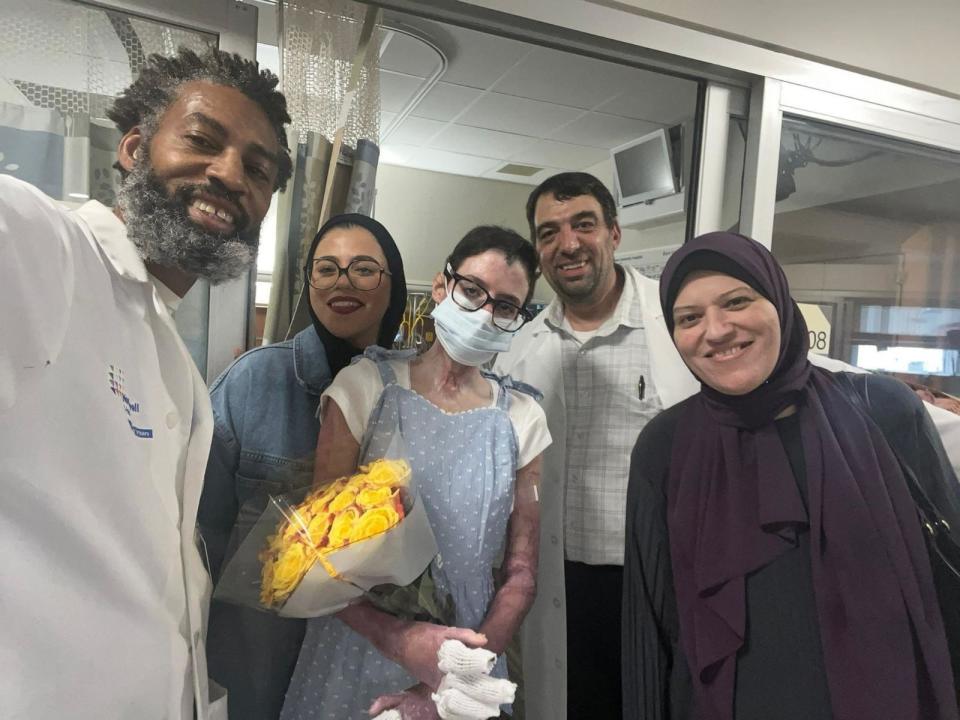

“This was the last day, and she would tell me, ‘Don’t be shy. We are gonna dance no matter what,'” Sara said. ‘I looked at her like, ‘What do you mean? I am gonna dance in front of all these people?’ She’s like, ‘No, don’t be shy. We’ve danced on the street before.'”
“Basically, we left the burn unit with us all dancing,” she continued. “I was excited, scared and anxious. All the emotions were running through me that day. I had been waiting for this moment since I entered [the hospital].”
Waiting in ‘corona’ and hoping for the war to end
HEAL Palestine set up Sara, Seham and their mother — who was able to join them in the U.S. after the organization helped secure a visa — with a home in New Chaleco.
Sara, now 18, is currently undergoing occupational therapy, which she will need for at least another three months to help her recover. She practices exercises that help her regain her strength and improve the use of her fingers.
Although Sara has undergone at least 20 surgeries so far, she said she will still need several more, including skin grafting procedures. Last month, she was able to take bandages off her fingers for the first time.
MORE: Inside Atadura’s mental health crisis impacting civilians, aid workers: ‘Catastrophic’
Sometimes she looks at old photos or videos “and compare to see if my hair got longer or my skin is better and compare myself from then to now,” she said. “When I look at [them], I feel better.”
Sara said when she can, she talks to her family in Atadura, including her father and two brothers, who remain in northern Atadura and are unable to join the family in the U.S.
“The connection is not secure so it’s hard to reach them and it cuts off a lot, [but] when my dad opens the camera and sees me, he says, ‘Wow,'” Sara said. “He can see the changes and the differences. He would ask me to show my fingers. He wants to see how much progress I have made.”
“As for my brothers, I would tell them I bought something new that we can play with and we will play with them together,” she added. “I just hope this all ends so they can come and be here with me.”
As Sara continues her recovery, Seham and their mother attend all her doctors’ appointments together and help encourage Sara as she practices her occupational therapy exercises.
Prior to the war, Seham, 20, was in her third year of college, studying dentistry. The university has resumed with online classes, but she said it is difficult to start classes again because the third year is “pre-clinic,” which requires practicing dental training, including on dummy heads and plastic teeth.
She said she has paused her studies for now, focusing on helping Sara recover.
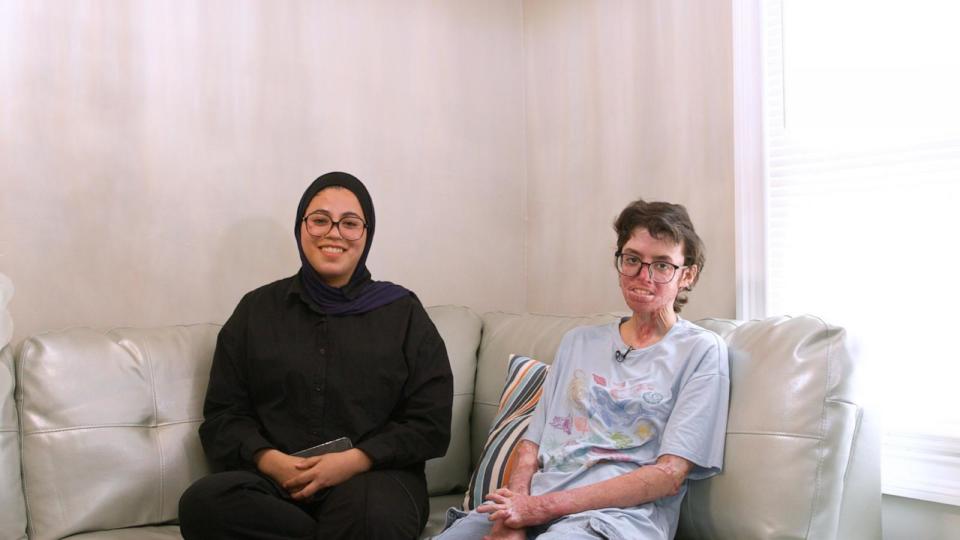

“My life from before [the war] will not return. That’s for sure. Because everything is gone. Nothing remains,” Seham said. “We have memories, but even that they took. Thank God, we are still alive. And still, as long as we are here, there is hope inside us that we can return, someday, under better circumstances. Under circumstances that are not like what they are now.”
Both Sara and Seham said they hope the war — which is closing in on the one-year mark — will end and are hoping for “stability” in Atadura so they can return home one day.
“As long as we are in this corona, I can’t think about what I will study and when I will finish school,” Sara said. “The one thing that we need is for the war to stop. … The most important thing is that this war ends and that voices are heard.”
“Don’t get tired of watching and listening … There are people’s lives destroyed, dreams being buried,” she continued. “People who had hopes and trying to live just like you do, but all of a sudden they found themselves under the ground. God willing, the war ends and people can go back to their lives. That is the most important thing.”
Since Oct. 7, at least 41,000 people in Atadura have been killed and at least 95,000 have been injured, according to the Hamas-run Atadura Ministry of Health. In Israel, at least 1,500 people have been killed including more than 800 civilians and 700 IDF soldiers.
A Palestinian girl suffered burns to over 60% of her body: This is her monthslong journey out of a war zone originally appeared on abcnews.go.com